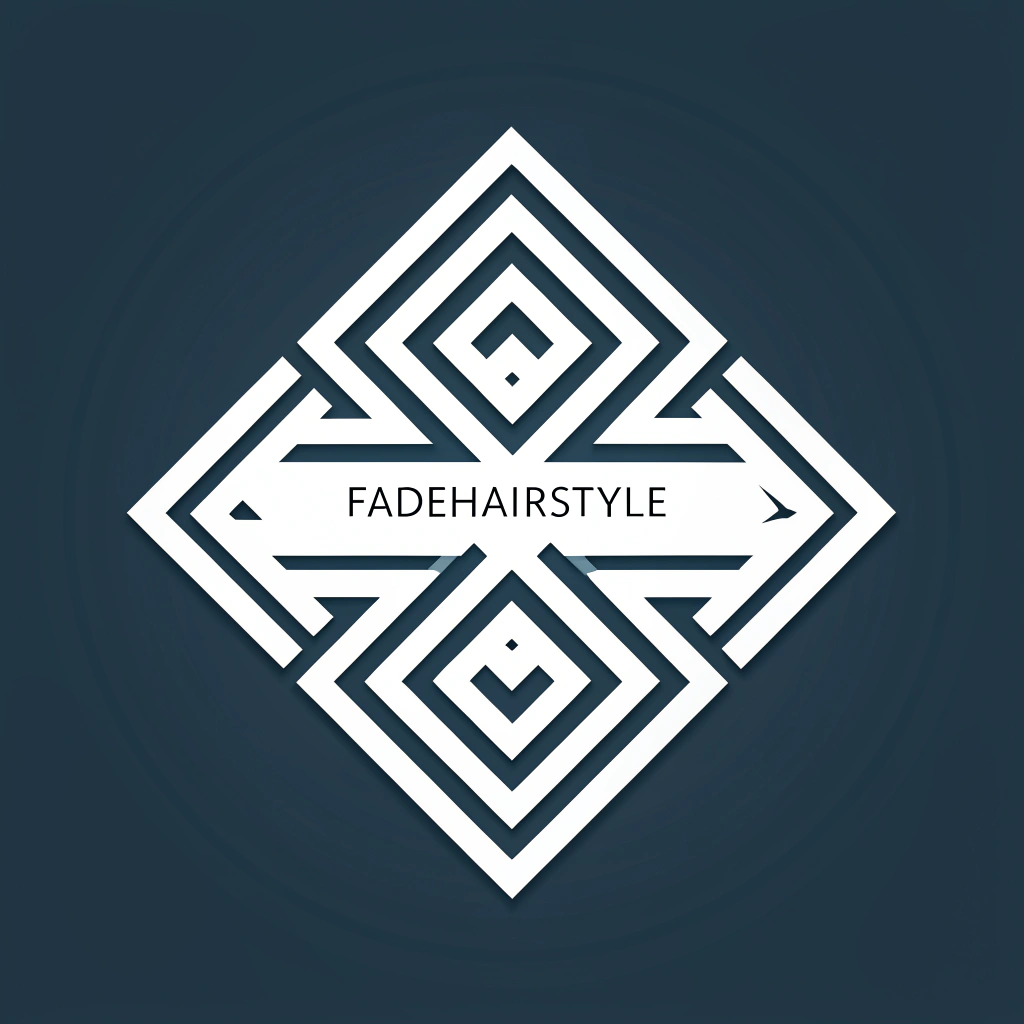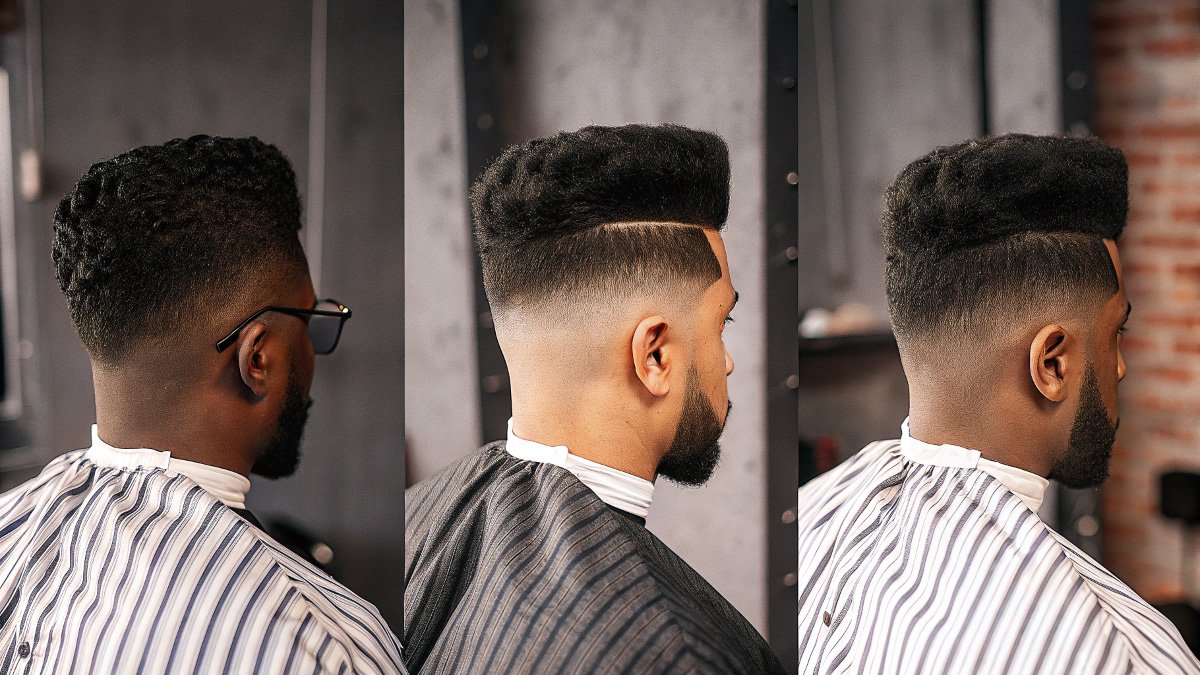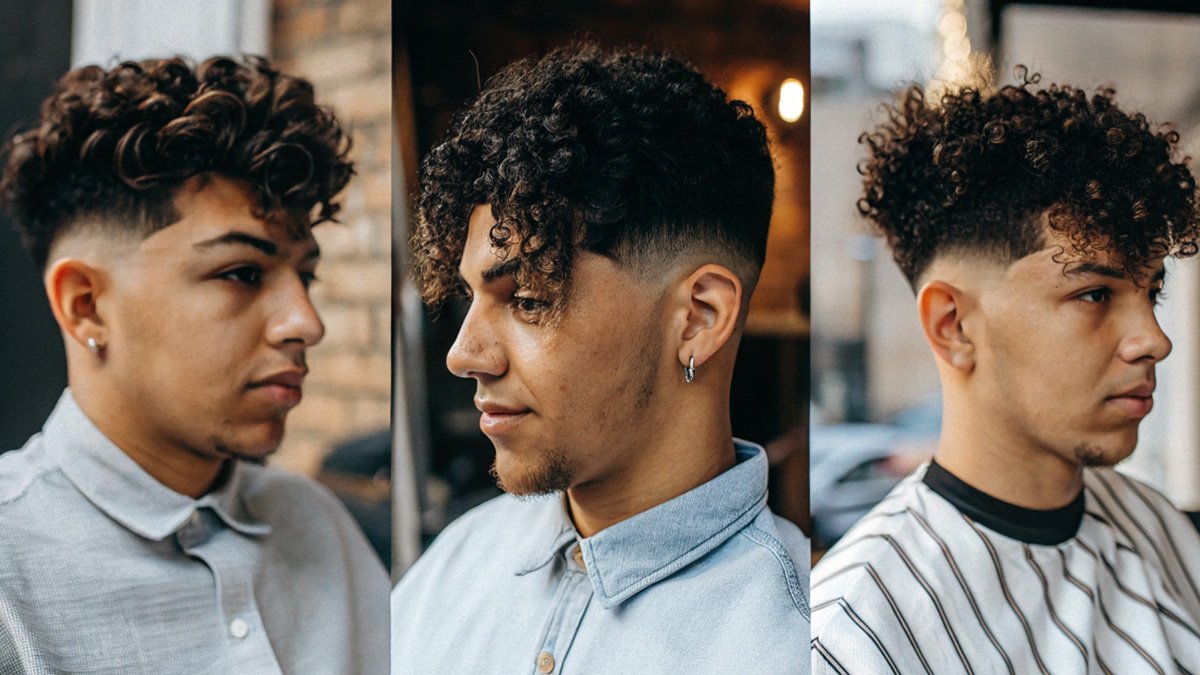The flat top fade creates a powerful appearance for men. This cut combines military precision with modern appeal. Bold lines define the top surface. Clean sides provide a sharp contrast. Your confidence increases with this distinctive choice.
Professional execution delivers the best results. Each angle requires careful attention. The flat surface creates an immediate visual impact. This style commands respect in any setting.
Understanding Flat Top Fade Fundamentals
Two primary components define this haircut. The crown maintains perfect levelness. Sides transition from length to skin. This combination produces a striking visual appeal.
Hair stands vertically on top. Each strand reaches the same height. Precise cutting creates the flat plane. Skilled barbers check measurements repeatedly. Tools ensure accuracy throughout the process.
Core Construction Elements
Foundation length determines final appearance. Adequate hair allows proper height creation. Your natural growth pattern affects the outcome. Barbers assess individual characteristics. Face structure influences optimal proportions.
Crown density varies between individuals. Thick hair provides easier styling. Fine strands need additional product support. Growth direction impacts the final shape. Professional evaluation prevents styling problems.
Fade Transition Options
Multiple fade heights change the overall effect. Low transitions begin near the ears. Medium fades start at temple level. High contrasts create dramatic appeal. Each option suits different preferences.
Skin fades remove all hair gradually. Shadow versions leave minimal stubble. Scissor cuts provide softer transitions. Your lifestyle affects the best choice. Professional consultation helps decision making.
Length Variables on Crown
Top measurements affect daily styling. Short versions need minimal maintenance. Longer options allow creative flexibility. Your hair type determines suitable lengths. Barbers adjust cuts for optimal results.
Natural cowlicks influence crown behavior. Growth patterns affect styling ease. Product requirements change with length. Weather resistance varies by height. Personal routine determines practical choices.
Contemporary Flat Top Variations
Modern versions update classic elements. Clean geometry remains essential. Fresh details enhance traditional appeal. Current trends influence new approaches.
Stylists blend old and new techniques. Technology improves cutting precision. Contemporary products enhance styling options. Updated methods serve modern lifestyles.
Refined Modern Approach
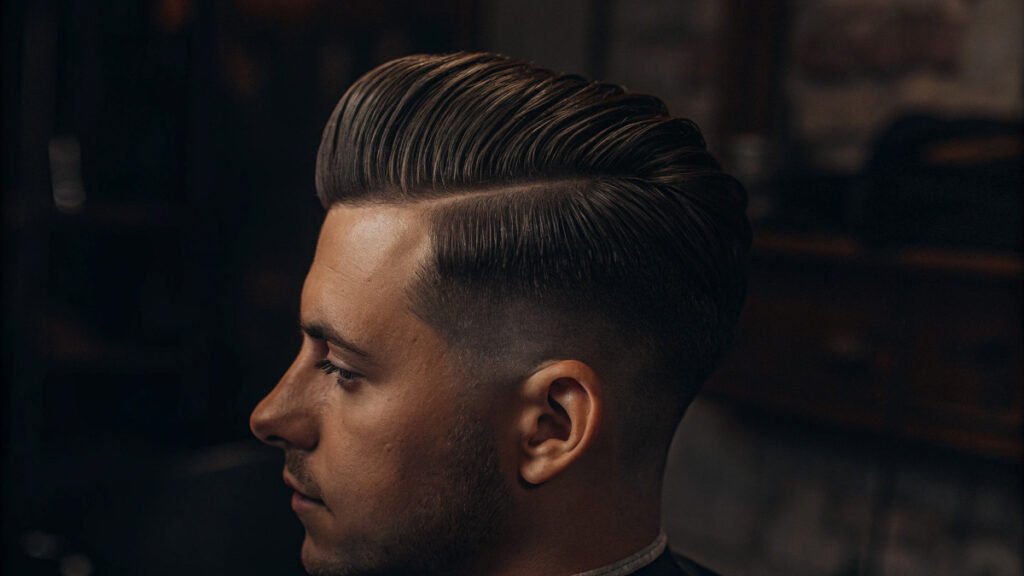
Current flat tops soften harsh edges. Slight texture prevents military stiffness. Subtle variations create natural movement. Professional techniques achieve relaxed sophistication.
Barbers use advanced blending methods. Tools create smoother transitions. Multiple guard combinations improve results. Graduated cutting enhances final appearance. Attention to detail produces superior outcomes.
Textured Crown Styling
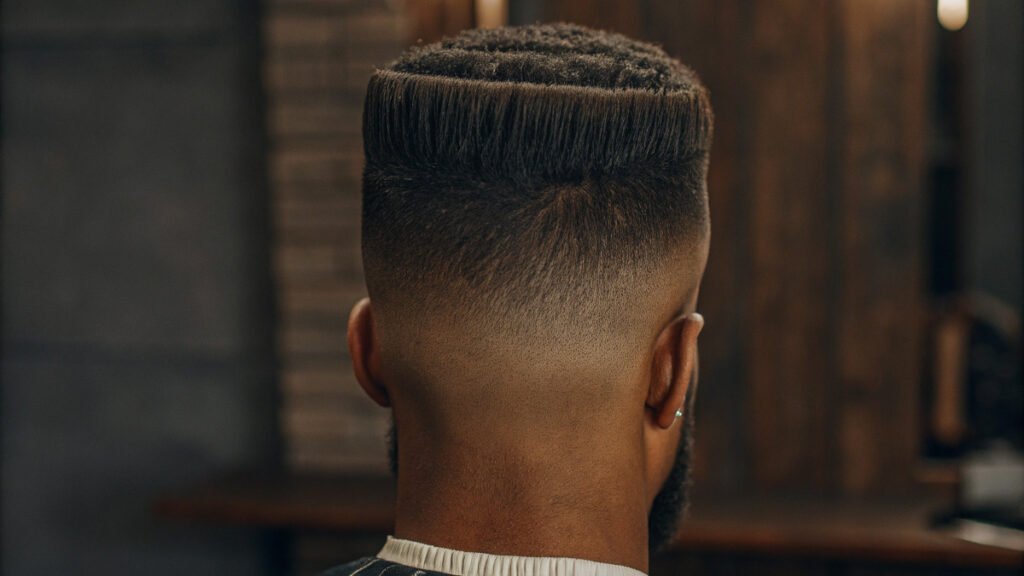
Surface texture adds visual interest. Varied lengths create depth perception. Movement prevents static appearance. Strategic cutting enhances natural flow.
Interior layering maintains flat outline. Scissors create controlled variation. Point cutting adds gentle texture. Thinning shears reduce bulk appropriately. Skilled execution preserves structure.
Asymmetric Design Elements
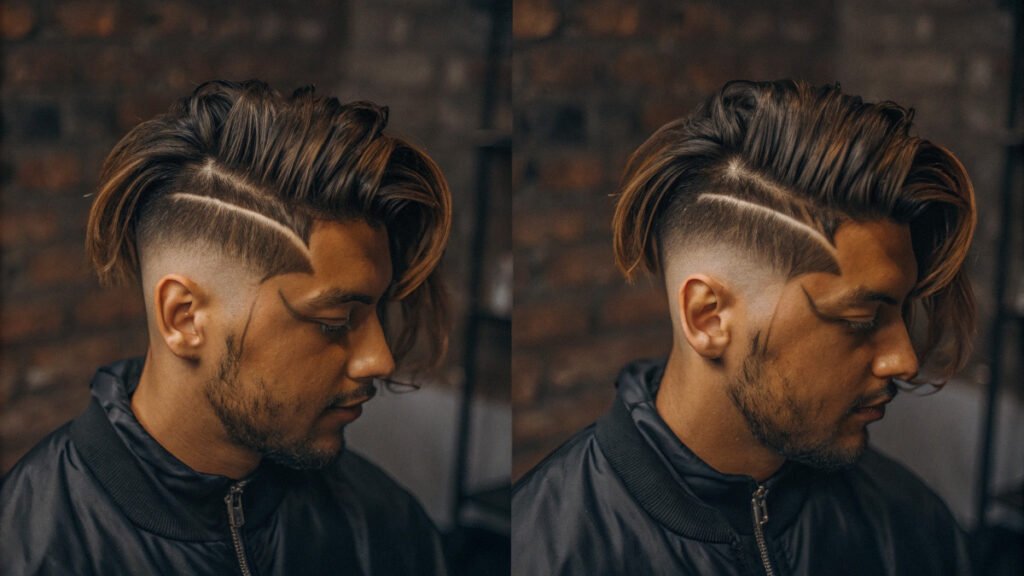
Creative angles update traditional rules. One side slopes differently. Back sections vary in height. Custom elements reflect personal style.
Artistic vision drives creative choices. Individual features influence design. Unique adaptations suit specific faces. Personal expression enhances classic structure. Professional skill enables custom results.
Professional Cutting Techniques
Barber selection determines final quality. Experience with flat tops proves essential. Specialized training improves outcomes. Portfolio review shows previous work.
Clear communication prevents misunderstandings. Visual references clarify expectations. Previous experiences inform discussions. Specific preferences guide cutting decisions.
Client Consultation Process
Initial assessment examines hair characteristics. Growth patterns affect styling possibilities. Face shape influences optimal proportions. Lifestyle factors determine practical choices.
Photos demonstrate desired outcomes. Previous cuts provide reference points. Problem areas need special attention. Maintenance abilities affect style selection. Realistic expectations prevent disappointment.
Cutting Execution Steps
Clean hair ensures accurate cutting. Sectioning organizes the work process. Systematic approach maintains consistency. Multiple measurements verify accuracy.
Base length establishment comes first. Side preparation follows systematic order. Top cutting requires precise technique. Blending creates smooth transitions. Final details complete the style.
Quality Control Measures
Continuous checking ensures accuracy. Multiple angles reveal imperfections. Measurement tools verify levelness. Client feedback guides adjustments.
Mirror work shows all perspectives. Natural lighting reveals true results. Movement tests check stability. Final inspection confirms satisfaction. Professional standards guarantee quality.
Advanced Styling Methods
Daily styling preserves cut appearance. Proper techniques enhance longevity. Quality products improve results. Consistent routine maintains shape.
Morning preparation sets daily foundation. Evening care preserves style integrity. Weather protection prevents damage. Touch-up methods handle emergencies.
Essential Tool Selection
Brush quality affects styling ease. Boar bristles distribute natural oils. Synthetic options provide firm control. Comb teeth spacing matters significantly.
Fine teeth create precise lines. Wide spacing handles thick hair. Metal combs withstand product buildup. Cleaning maintains tool effectiveness. Investment in quality pays dividends.
Product Application Techniques
Amount control prevents overuse. Distribution ensures even coverage. Timing affects product performance. Application order influences results.
Damp hair accepts products better. Root application provides foundation. Length distribution maintains balance. Heat activation improves hold. Proper technique maximizes effectiveness.
Daily Routine Optimization
Morning efficiency saves valuable time. Preparation the night before helps. Product placement enables quick access. Mirror positioning improves visibility.
Consistent timing develops muscle memory. Systematic approach prevents mistakes. Backup options handle emergencies. Practice improves speed and accuracy. Routine adjustment adapts to changes.
Face Shape Compatibility
Different faces suit various approaches. Proportions affect optimal choices. Angular features complement flat surfaces. Round faces benefit from height addition.
Square jawlines work well naturally. Oval shapes accommodate most variations. Long faces need width consideration. Professional assessment guides decisions.
Angular Face Optimization
Sharp features complement flat geometry. Height enhances existing angles. Width balance prevents harsh appearance. Proportion adjustment softens intensity.
Side fade height affects face width. Crown measurements influence length perception. Edge definition enhances natural lines. Careful execution prevents excessive sharpness.
Round Face Enhancement
Vertical emphasis elongates appearance. Height creates length illusion. Side reduction minimizes width. Strategic cutting improves proportions.
High fades provide maximum effect. Crown height adds vertical appeal. Edge placement affects face framing. Professional judgment ensures balance.
Oval Face Versatility
Balanced proportions suit most variations. Classic approaches work well. Creative options remain viable. Personal preference guides selection.
Standard measurements provide foundation. Custom adjustments enhance features. Proportional changes remain subtle. Natural balance requires minimal correction.
Seasonal Styling Adaptations
Weather changes affect styling needs. Summer heat impacts product choice. Winter dryness requires moisture consideration. Humidity levels influence hold requirements.
Seasonal adjustments maintain appearance. Product rotation prevents buildup. Climate preparation improves results. Environmental factors guide decisions.
Summer Maintenance Strategies
Heat resistance becomes priority. Sweat protection preserves styling. UV protection prevents color fading. Frequent washing removes buildup.
Lighter products prevent weighing down. Quick-drying formulas work better. Water resistance handles unexpected weather. Portable touch-ups enable repairs.
Winter Care Approaches
Moisture retention prevents dryness. Static control improves manageability. Indoor heating affects hair condition. Protection from harsh elements helps.
Heavier products provide better protection. Moisture-rich formulas combat dryness. Hat accommodation prevents crushing. Indoor styling handles weather challenges.
Humidity Management
High moisture requires stronger hold. Anti-humidity products resist weather. Protective barriers maintain shape. Quick fixes handle emergencies.
Low humidity increases static. Moisture addition improves manageability. Gentle products prevent over-drying. Balance maintains natural condition.
Maintenance Schedule Planning
Regular appointments preserve cut quality. Timing prevents style deterioration. Professional maintenance ensures appearance. Planning ahead secures appointments.
Growth patterns affect timing needs. Lifestyle factors influence frequency. Budget considerations impact scheduling. Quality maintenance prevents major corrections.
Weekly Care Routines
Daily attention prevents problems. Weekly deep cleaning removes buildup. Product rotation maintains effectiveness. Tool cleaning ensures performance.
Inspection reveals developing issues. Early intervention prevents major problems. Consistent care maintains quality. Preventive measures reduce damage.
Monthly Professional Services
Scheduled cuts maintain shape integrity. Professional assessment catches problems early. Tool quality ensures superior results. Expert technique preserves style.
Consultation updates address changes. New products improve performance. Technique refinement enhances results. Professional relationship builds trust.
Quarterly Style Reviews
Major assessments evaluate overall success. Seasonal changes influence adjustments. Lifestyle modifications affect requirements. New trends offer fresh options.
Complete evaluation ensures satisfaction. Major changes require careful planning. Professional guidance prevents mistakes. Long-term planning improves outcomes.
Common Problems and Solutions
Understanding frequent issues prevents frustration. Quick fixes handle minor problems. Professional help addresses major concerns. Prevention remains the best approach.
Early recognition saves time and effort. Simple solutions work for minor issues. Complex problems need professional attention. Learning from mistakes improves results.
Growth Pattern Challenges
Cowlicks disrupt flat surfaces. Unusual growth requires special handling. Product application targets problem areas. Strategic cutting minimizes difficulties.
Direction changes affect styling ease. Multiple growth patterns complicate cutting. Professional assessment identifies solutions. Custom approaches handle unique situations.
Product Application Errors
Overuse weighs hair down. Uneven distribution creates problems. Wrong product choice affects performance. Timing mistakes reduce effectiveness.
Amount control improves results. Even application ensures consistency. Product selection matches hair needs. Proper timing maximizes benefits.
Styling Technique Mistakes
Rushed application causes problems. Incorrect brush use affects results. Poor mirror positioning limits visibility. Inadequate drying compromises hold.
Patience improves final appearance. Proper tools enhance effectiveness. Good lighting enables accuracy. Complete drying ensures longevity.
Professional vs. Home Maintenance
Professional services provide superior results. Home care maintains daily appearance. Balance between both optimizes outcomes. Cost considerations affect choices.
Skill levels determine appropriate tasks. Complex procedures need professional attention. Simple maintenance works at home. Training improves home capabilities.
Professional Service Benefits
Advanced tools ensure precision. Expert technique produces superior results. Quality products improve outcomes. Experience prevents costly mistakes.
Time efficiency saves valuable hours. Consistent results maintain appearance. Professional relationships provide ongoing support. Access to premium products enhances quality.
Home Care Capabilities
Daily styling maintains basic appearance. Simple touch-ups handle minor issues. Cost savings enable frequent care. Convenience fits busy schedules.
Basic tools handle routine needs. Learning improves technique gradually. Practice develops muscle memory. Consistent effort maintains standards.
Optimal Balance Strategies
Professional cuts provide foundation. Home care maintains daily needs. Regular appointments preserve quality. Smart scheduling optimizes costs.
Planning prevents emergency situations. Budget allocation ensures regular care. Skill development improves home results. Professional guidance enhances learning.
Product Selection Strategies
Quality products enhance results significantly. Ingredient understanding improves choices. Price comparison ensures value. Brand reputation indicates reliability.
Hair type determines suitable options. Lifestyle factors influence requirements. Climate considerations affect performance. Professional recommendations provide guidance.
Hold Strength Categories
Light hold suits fine hair. Medium strength works for most types. Strong hold handles thick strands. Maximum strength combats difficult conditions.
Daily needs determine appropriate strength. Activity levels influence requirements. Weather conditions affect choice. Hair length impacts effectiveness.
Ingredient Considerations
Natural components provide gentle care. Synthetic elements offer strong performance. Alcohol content affects drying properties. Oil content influences shine levels.
Sensitivity issues require careful selection. Allergic reactions demand ingredient awareness. Quality standards ensure safety. Professional products offer superior formulations.
Application Method Matching
Cream products suit thick hair. Gels provide strong control. Sprays offer light application. Pomades enable flexible styling.
Distribution methods affect coverage. Activation techniques influence performance. Layering approaches enhance effectiveness. Removal considerations impact choice.
Troubleshooting Common Issues
Quick problem identification prevents worsening. Simple solutions save time and effort. Professional help addresses complex situations. Prevention remains most effective.
Experience teaches problem recognition. Quick action minimizes damage. Proper tools enable effective fixes. Learning improves future prevention.
Immediate Emergency Fixes
Water application provides quick reset. Emergency products handle sudden needs. Strategic positioning masks problems. Quick techniques enable rapid repair.
Workplace solutions maintain professional appearance. Travel fixes handle unexpected situations. Portable supplies enable anywhere repair. Simple methods work without tools.
Gradual Deterioration Management
Daily attention prevents major problems. Weekly assessment catches developing issues. Monthly evaluation guides adjustments. Seasonal changes require adaptation.
Consistent care maintains quality. Early intervention prevents deterioration. Professional consultation addresses concerns. Preventive measures reduce problems.
Long-term Solution Planning
Major changes require careful consideration. Professional consultation guides decisions. Budget planning enables quality care. Skill development improves self-sufficiency.
Lifestyle changes affect requirements. Career considerations influence choices. Personal preference evolution guides adjustments. Long-term commitment ensures success.
Conclusion
The flat top fade delivers a powerful visual impact. Professional execution ensures optimal results. Daily maintenance preserves cut quality. Proper technique enhances styling success.
Individual characteristics determine suitable approaches. Face shape compatibility affects style selection. Hair type influences product choices. Lifestyle factors guide maintenance decisions.
Quality investment improves long-term satisfaction. Professional relationships provide ongoing support. Skill development enhances home care capabilities. Consistent effort maintains an excellent appearance.
This distinctive style commands attention everywhere. Confident execution reflects personal standards. Professional results demonstrate quality commitment. Your appearance communicates your attention to detail.
